Line art in all its glory - famous line artists and techniques from art history.
Introduction - Exploring the World of Famous Line Artists
In this article we examine the world's most famous line artists, and also discuss the important aspects of line art. We look into the different mediums and techniques that can be used to produce lines within art, and the different types of symbolism that they can be used for.
Line art has existed for many centuries, dating back to the start of art itself, and so many different artistic styles will be covered in this article. That said, our list of famous line artists below has a bias towards western painters and draughtsmen from the past five centuries, and from a European/American perspective.
Famous Line Artists: Icons and Influencers in the World of Line Art
We have hand-picked a selection of artists below which provide an interesting list of famous line artists, covering a period from the early Renaissance up to the present day. Naturally, many other artists could have been included here, but it was important to summarise the list into a concise selection.
You will notice a breadth in styles below, with architectural drawings, complex portrait drawings and minimalist oil paintings all featured - there should be art for almost any taste included below, but it must be mentioned that the main focus here is on western art, and that many other regions have also contributed impressive line artists from all manner of different civilizations, particularly in Africa and Asia.
Michelangelo
Michelangelo was a true line artist, and was able to deliver complex depictions using a variation of line. Some of the drawings below provide examples of this, and he also became a respected architect, able to draw complex designs. The artist studied the human body in great detail and was able to master it in his art through repetition and careful observation.
The artist mastered ways in which to use lines to give the impression of movement, which was another key aspect to his work. He used different drawing techniques, such as line crosshatching in order to create accurate portraits. He would also vary lighting and color aws well, plus also the thickness and boldness of the lines in his drawings.
.jpg) Line Artist, Michelangelo (Three Standing Men in Wide Cloaks Turned to the Left)
Line Artist, Michelangelo (Three Standing Men in Wide Cloaks Turned to the Left)
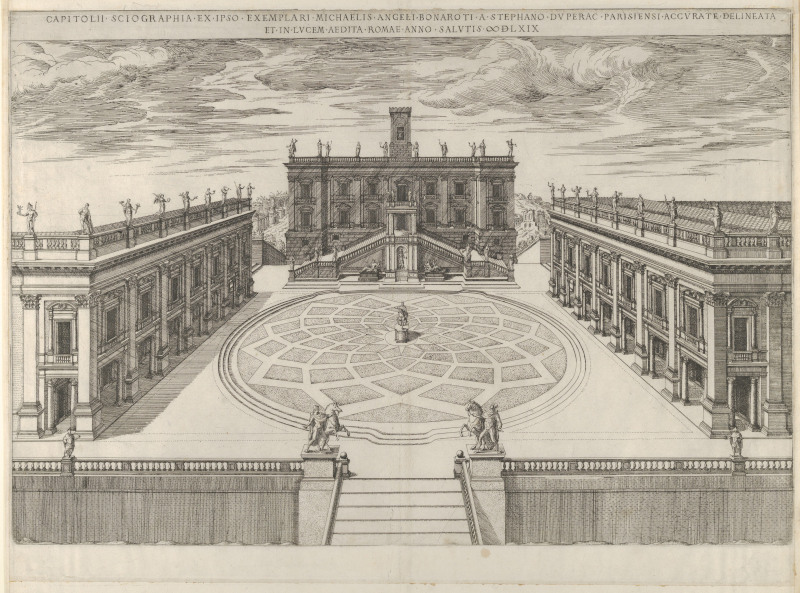 Capitoline Hill Line Drawing Michelangelo
Capitoline Hill Line Drawing Michelangelo
Giotto
When competing for a new commission, Giotto famously drew a circle by hand that was so accurate that the donor refused to believe that he completed it without a tool to assit him. It was only later, when knowledge of his gifted talents became widely understood, that his circle line drawing was truly believed.
Giotto came in the very early stages of the Renaissance, and his technical work was crucial in opening doors for later artists such as the masters of Leonardo, Michelangelo and Raphael. Giotto's use of lines also helped advance perspective within art, which up to that point had tended to be flat and entirely unrealistic.
Albrecht Durer
The German Renaissance master, Durer, was a gifted draughtsman who could compose highly detailed artworks using his raw techniques. He would continue this on into woodcuts and engravings, whilst also being able to make initial drawings as preparation for his paintings.
His style was precise and intricate, and he was also talented in capturing three dimensional forms on paper. Durer was able to capture scenes from nature too, including wild animals which he had never seen in person, but was able to sketch based on other people's descriptions.
 by Albrecht Durer.jpg) Woodcut (Coat of Arms Line Design) by Albrecht Durer
Woodcut (Coat of Arms Line Design) by Albrecht Durer
Henri Matisse
Matisse had a long and successful career, with his style and technique evolving many times over. He is remembered for his minimalist figurative work, such as his Blue Nudes, as well as his cut-outs. The latter involved painting cardboard and paper, before cutting out elements to create all manner of different forms.
Matisse was also highly skilled as a draughtsman and could create people and animals from just a single line, carefully composed. He worked in a similar manner to Picasso in that regard, who himself captured dogs, flamingoes and many other creatures.
Paul Klee
Paul Klee was a Swiss painter and draughtsman who left behind an extraordinary output of modern art. He used lines for all manner of different effects, sometimes to lead the eye, and other times to create a mood within the work. He mastered oils, watercolors and many mixed media, sometimes combining different elements together in order to maximise his creativity.
Besides his lines, Klee also produced scenes from squares and triangles, including charming paintings like Castle and Sun. He was truly abstract and imaginative, and his work continues to be loved today, all around the world. Some of the varied examples of how Klee used lines within his compositions are included below.
.jpg) Chimes (Paul Klee, Line Artist)
Chimes (Paul Klee, Line Artist)
 Line Painting.jpg) Erzengel (Paul Klee) Line Painting
Erzengel (Paul Klee) Line Painting
Wassily Kandinsky
Kandinsky also evolved over his career, and towards the end of this transition his work was highly abstract. He regularly used lines, often combined with squares, circles and other shapes to mimic cosmology in his art. The earlier parts of his career included expressive landscape scenes and bright color persisted throughout his lifetime.
This Russian painter moved to Germany and also taught many of his ideas to the next generation of students, helping Germany to establish itself as a major force within modern art. Kandinsky mastered color and could create all manner of effects with a careful use of line, shape and colour.
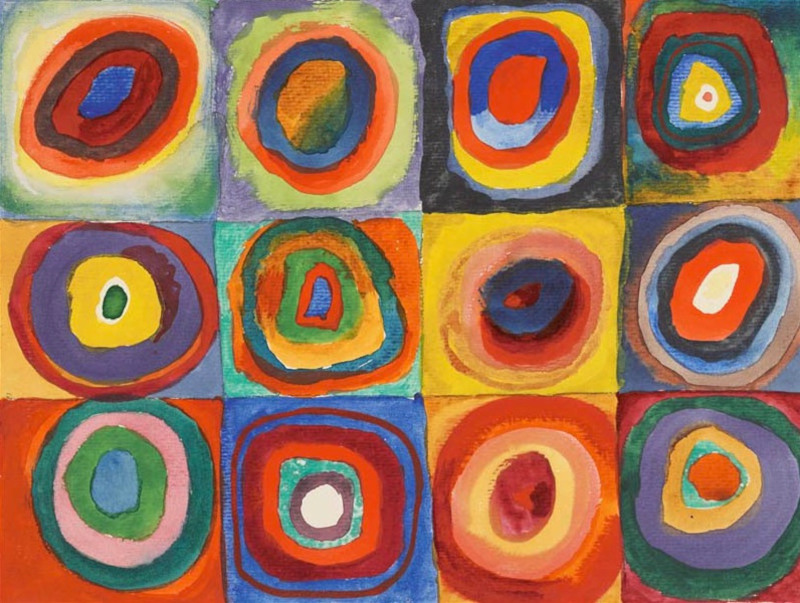 Circles and Squares Line Artist - Wassily Kandinsky
Circles and Squares Line Artist - Wassily Kandinsky
Piet Mondrian
Dutch painter Piet Mondrian began as an Expressionist artist with an interest in landscape painting, whilst also producing a number of other works in more traditional styles. He would later switch to an abstract manner and is best known for that approach today, including classics such as Broadway Boogie Woogie and Composition with Red, Blue and Yellow.
The artist liked to form squares, sectioned off by thick lines. He used primary colors, and often lines were formed in black. He experimented with this approach over a number of years, sometimes arranging his rectangles in a more random way, and also using gradients of color across the background too.
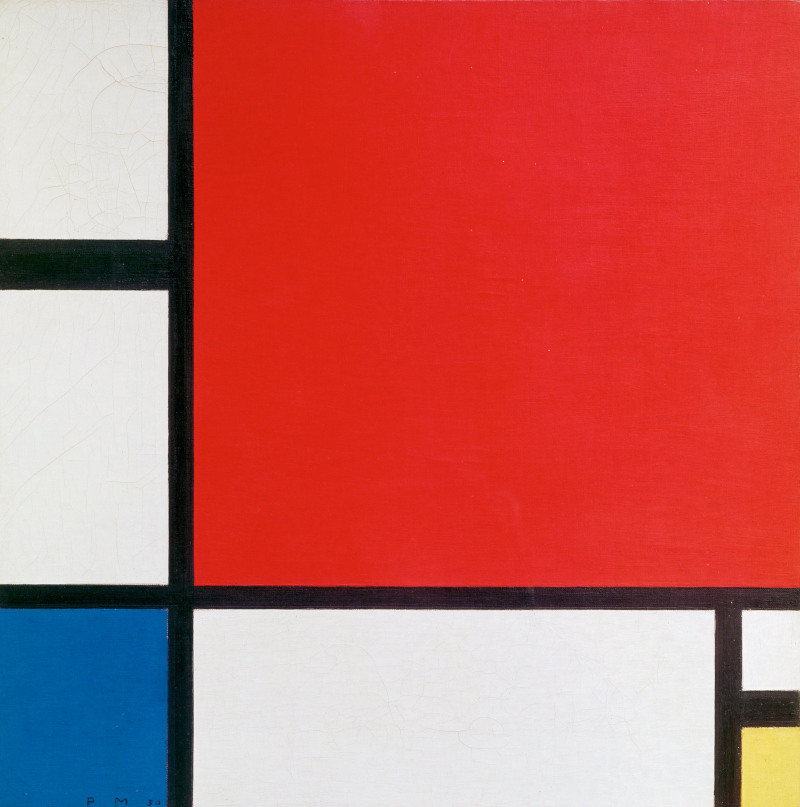 Lines and Squares Piet Mondrian
Lines and Squares Piet Mondrian
Kazimir Malevich
Kazimir Malevich was another Russian artist who contributed to modern art through the Abstract Expressionist movement, although his own approach was classed as Suprematism. There are clear similarities with the late work of Kandinsky, with squares, rectangles and lines combined in all manner of ways.
His best known works were White on White and Black Square, though there were also some bright and charming images of local peasantry which the artist turned to in order to avoid coming into conflict with the ruling powers of the time. He found Germany to be more hospitable, and left many of his works here after a successful exhibition.
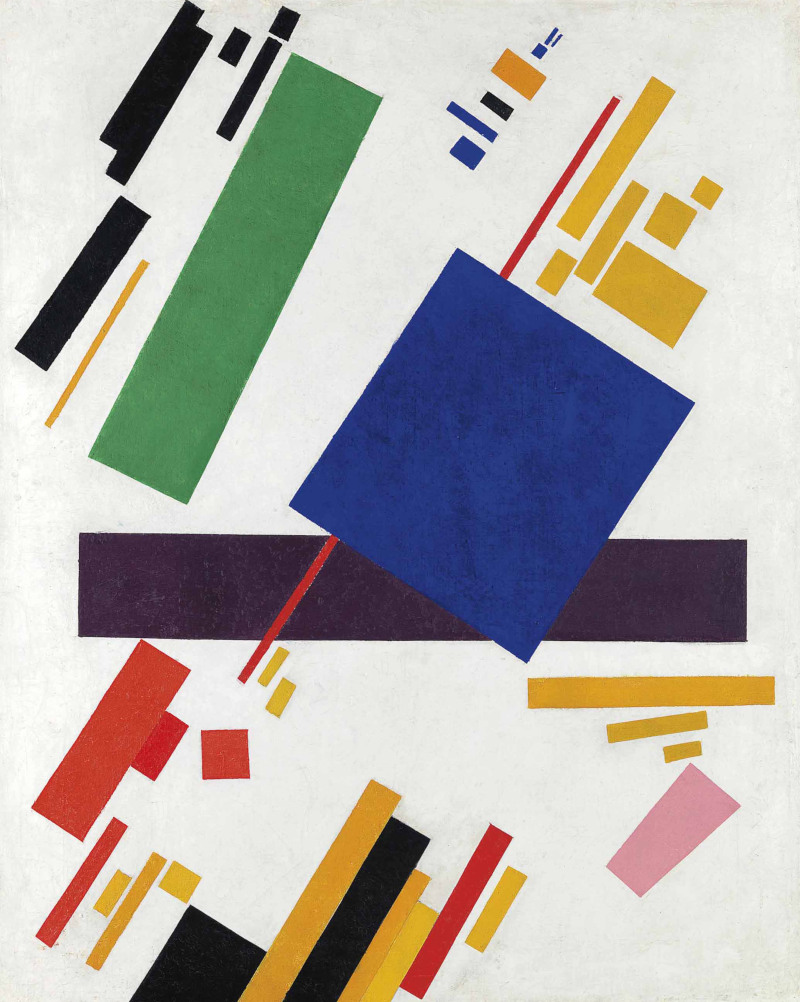 Line and Square Composition by Artist Kazimir Malevich
Line and Square Composition by Artist Kazimir Malevich
Egon Schiele
Schiele was a master of line, and focused mainly of figurative art within the Expressionist movement. He loved to contort bodies in a manner which reminds some of Mannerist artists such as El Greco. Schiele brought a sexual aspect to his portraits, and his oeuvre can be considered entirely unique.
Besides the portraits, there was also a number of impressive, expressive landscapes too, and Schiele bears some similarities in content to Gustav Klimt, though with an alternative approach that was even more ground-breaking at the time.
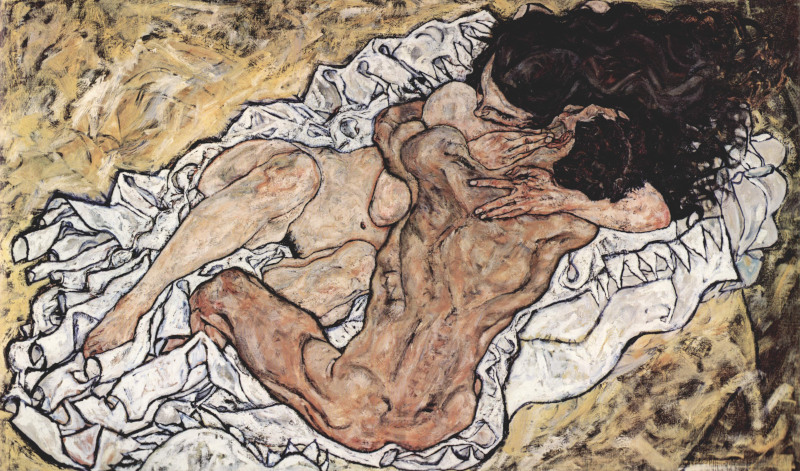 Line Portrait Drawing by Egon Schiele
Line Portrait Drawing by Egon Schiele
Bridget Riley
Bridget Riley was an extraordinary modern artist who used lines in a manner never seen before. Elaborate patterns would surprise and excite the viewer, combining careful color choices to add another aspect to modern art. This female artist was also part of a rising number of successful women who broke barriers within western art in the 20th century.
The artist's work sometimes looks almost mathematical, or like a scientific chart in the way in which the lines are displayed. It is truly unique and immediately recognisable, though since her career took hold, a number of other line artists have worked in a similar style, no doubt inspired by her own contributions.
Joan Miró
Miro was a Spanish painter, draughtsman and sculptor who left an important legacy within modern art. He was famed for the simplicity of many of his paintings, and embraced abstract art from an early age. He was able to build a form of iconography that could translate into paintings and sculptures, including a number of outdoor installations which still exist today.
In terms of line art, Miro would experiment with simple shapes to create representations in an abstract form, and found colour to be a useful tool with which to combine these musings.
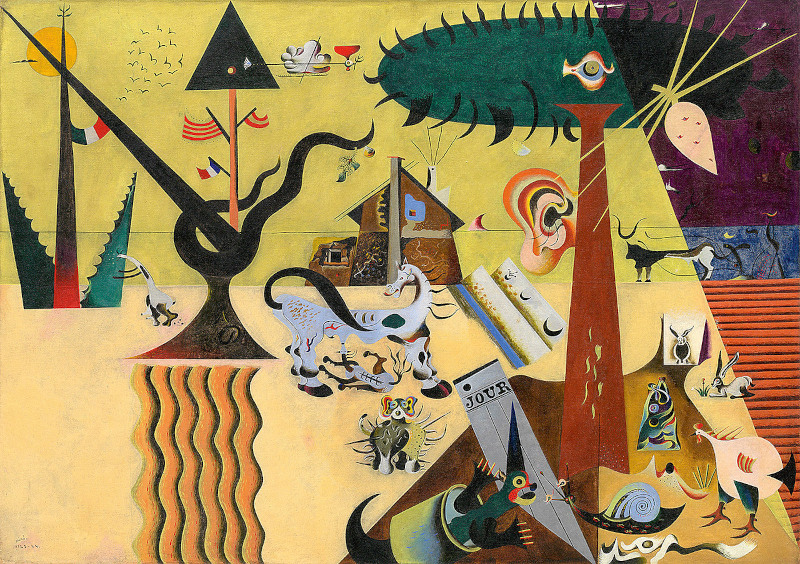 Abstract Line Artist - Joan Miro
Abstract Line Artist - Joan Miro
Aubrey Beardsley
Beardsley was a highly skilled British illustrator who involved sexual elements to his work, in a similar manner to Egon Schiele. Beardsley worked with black and white illustrations and his style feels entirely contemporary, all these years later. The artist was also involved in magazine and publications, and so was familiar with the printed press.
It may be the Beardsley's style was a little too controversial for his time. Success and artistic respect arrived later, and many consider him to be amongst their most famous British artists today, from across all the different movements in which the country has impressed.
Pablo Picasso
Picasso's line drawings are amongst the finest examples of line art. He was obsessed by drawing, painting, sculpting and just generally producing art and creativity whenever he could. Picasso's most famous line drawings covered his pet dog, Lump, as well as drawings of flamingoes, cats, various types of bird, and even pigs.
Picasso was amongst the most naturally talented of artists ever to have lived but he was also incredibly prolific and thanks to his long life was able to produce many thousands of artworks across his lifetime. The foundation to much of his success was his raw abilities, and his understanding of drawing from the purest of levels.
.jpg) Pablo Picasso Line Drawing (Flamingo)
Pablo Picasso Line Drawing (Flamingo)
Jackson Pollock
Jackson Pollock's success relied on lines, but not in a deliberate fashion as with most other artists included in this list. Instead he would apply paint using his drip technique, in which paint was squirted across a wide canvas, seemingly at random. This approach was exciting and expressive, but also inevitably upset traditionally-minded critics.
Pollock was a skilled technician, but decided against painting in that manner after the early stages of his career. He successfully brought something new to western art, and this helped him to make a name for himself. His style is part of the Abstract Expressionist movement which was particularly important in the US.
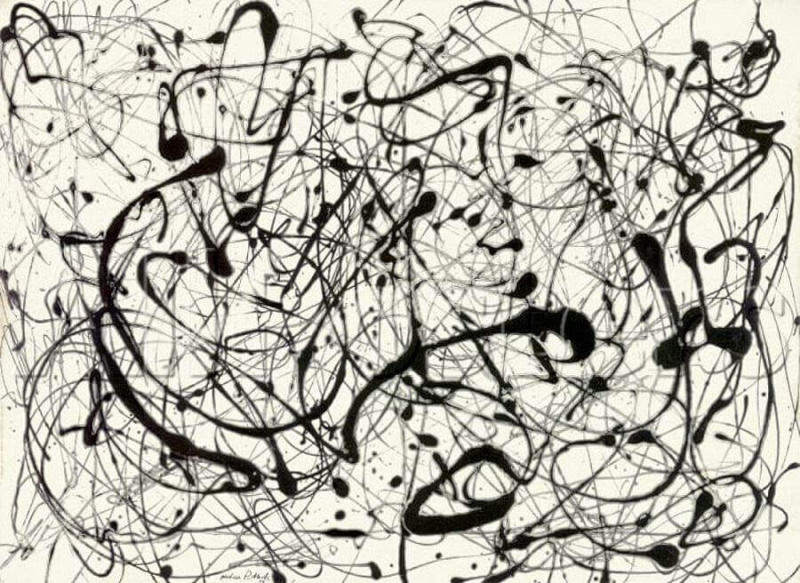 Jackson Pollock Line Painting - Drip Art
Jackson Pollock Line Painting - Drip Art
Keith Haring
Keith Haring was a popular modern artist who relied on bold lines to form many of his cartoon-esque paintings. He developed a form of iconography which made his work impactful, and also immediately recognisable as his own. The artist also used his work to become involved in activism, which was common for artists of this period within the US.
Haring's messages could spread internationally because of the accessible nature of his work, where language was avoided, and people from all age groups could relate to, and enjoy, his paintings. Some of his work will remind many of Paul Klee, but Haring came later and helped to evolve some of these ideas onwards for a new generation.
The Power of Lines in Art: A Guide to Line Artists and Their Techniques
Lines lay the foundation to artistic success, almost regardless of the style used by an artist. Line artists work in all manner of different ways to express themselves, and in many different mediums. By understanding the techniques of line artists, we get to see the foundations of their success, and can use that to develop our own techniques.
The earliest of artistic training has traditionally focused on drawing, specifically line drawing. This is because without knowledge and expertise in the basics, any advanced artistic techniques will be impossible to learn. Whilst some artistic tutoring is less rigid and formulaic today than once was, these general principles remain. Indeed, line drawing is a skill which benefits painters, sculptors, architects, cartoonists and many more.
One will quickly see from the list of line artists featured in this article that there are many different ways in which to draw and paint lines. One can make use of pencils, pens, brushes and even more technology to achieve much the same thing. Tablets can now be used, even mobile phones, to push out quick doodles, annotations, and other creative expressions.
Line Art Throughout History: From Ancient Times to Contemporary Creations
Line art has been around for centuries, with the earliest line artists appearing in the earliest civilizations. Ancient Egyptians are perhaps the most famous of early civilisations, incorporating line art into their hieroglyphics and wall carvings, touching on themes of daily life as well as mythology. Indeed, Egyptian art would become one of the most famous ancient art forms, and continues to enjoy a significant following even today.
Ancient Greece has a similar history with line art, but their use of it is more closely aligned with the types of art that we enjoy today. They would decorate many elements in their homes, such as vases. There would also be considerable amounts of sculpture and architecture which lied on precise drawing skills.
The Italian Renaissance in the 15th century then saw new developments, with the likes of Leonardo da Vinci and Michelangelo lifting the level of anatomy drawing to a new, more precise level. They would sit and sketch for hours ata time in order to better understand the intricate nature of the human body, before taking this experience into their sculpture and painting.
Romanticist artists would then bring about greater expression within art, before minimalism appeared with modern artists. Line artists today can embrace any of these approaches, but the reduction of detail to single line art is becoming more and more fashionable. Many appreciate the simiplicty of artists who can create form with just a single, well crafted line.
Teaching and Learning Line Art: Techniques and Resources for Beginners
The Bargue-Gérôme Drawing Course, devised in the 19th century, is perhaps the most famous method of learning to draw, but most budding artists will simply observe the work of others in order to first start off. In terms of line art, the minimalist approach is easy to understand, but more complex methods of drawing will require a course such as this.
Traditionally, academic artists would learn the techniques of drawing prior to working with oils or sculpture. This order remains much the same today, but artists who follow other paths to success may take a different approach. Another popular approach over the years has been to visit musuems and galleries, taking a seat, and sketching whatever one sees, be it elements of a painting, or perhaps the outline of a famous sculpture.
A relatively new innovation has been in online drawing resources which can work effectively, particularly for beginners. These can be very cost effective, though often give little feedback to the student. As with most types of education, the higher the level, the more expensive it will be. Those on limited budgets might consider online courses or perhaps one of the published courses from centuries ago, which still work well today.
Mastering Line Techniques: Tools, Materials, and Skills for Line Artists
The most popular tools and materials for drawing lines are pen, ink, brushes and digital technology - all of which can be experimented with for different results. With inks, one can experiment with different colours for different effects, though most prefer the simplicity of black ink, certainly as beginners. Pens also vary in tip, with finer and thicker options suiting different styles of drawing and writing.
Brushes come in different shapes, round, flat and liner. You can also apply watercolors, oils, and acrylics for different results. In terms of line artists, most will prefer a clear, defined edge, which allows a more precise control, including pencils. Brushes offer their benefits but are hard to control for single lines, especially thinner lines.
Minimalism in Line Art: Creating Impact with Simplicity
Minimalism encourages a strong focus on the key aspects of an artwork, stripping away the superfluous details. Line art works perfectly within minimalism, as even a single line can produce form, when combined with imagination and technique.
It is necessary for an artist to carefully consider each and every line when working in this manner, and often a minimalist line artwork will be completed quickly, and with no chance to later make changes. In fact, more time may be spent in planning the drawing than in actually executing it.
Many of those listed in our selection of line artists worked in this minimalist manner, seeing it as an exciting alternative to other mediums in which they may also have been proficient. Compare it to, for example, an elaborate oil painting that could take months to produce and involve countless adjustments. Digital art does, perhaps, allow for easy adjustments on a tablet, where the same line can be completed and removed several times over, where as doing the same on paper will normally leave some evidence behind.
Exploring Styles and Approaches in Line Art: From Realism to Abstraction
There are many different styles of line art, to match the different intentions. Realistic depictions require accurate lines, and connect with the Realism art movement. Strong technicians in this movement would rely on line techniques such as shading, cross-hatching, and stippling, though these methods also appear in many other movements.
Illustrative lines can be complex in style, but with individual objects using relatively little detail. An example might be that of Alphonse Mucha, who would arrange patterned displays for Art Nouveau posters. There is also geometric line art, similar to the work of Malevich and Kandinsky, where art and diagram combine.
Lines can also be used to signify expression or gesture, though used in a much more informal manner. One example might be the Surrealists, who created automated drawing, where people might sketch without accessing their conscious mind.
Line Art in Commercial and Applied Fields: Illustration, Design, and Advertising
Line art has proven useful in advertising, where simplicity can often help to get a message across quickly and effectively. Complex, highly detailed designs may be too distracting when a company just has a short window of attention from a potential customer. Posters will promote just a few key words, and avoid giving anyone too much to read.
Therefore, advertising and line art fit well together, mainly from using the basic principles of design. Lines can also be drawn in a manner that leads the eye, potentially to a call to action. This also is the case with online advertising, which have the added option of animation.
Line Art as a Therapeutic Practice: The Healing Power of Lines
Line art, as well as drawing or painting more generally, can have a healing effect on one's mind. These types of activities can really help focus the mind, and remove all other distractions, pretty much immediately. When artists are able to draw something effectively, this can have the added benefit of increasing their self confidence, particularly when they were not expecting to succeed.
In other examples, perhaps with children, one can learn more about the mind by asking people to sketch out something with which they are already familiar. The manner in which they draw the object, could indicate some underlying feelings which cannot be accessed in other ways.
The Digital Frontier: Exploring Line Art in the Digital Age
The digital world has helped to encourage the spread of artistic influence on a global scale for the first time. Sharing is quick and easy today, with just a few clicks of a button. Additionally, there are new opportunities to sketch from a device, using digital pens or your own fingers.
Technology was initially used for the processing of photographs, but today many more options exist. With the advent of AI, it will become a challenge to determine which artworks have been produced by artists, and which by computers in the future.
Beyond the Canvas: Line Art in Sculpture, Installations, and More
Line art is highly flexible and can be used for all manner of different art mediums, as well as some practical uses. For example, simple lines can produce diagrams, such as in science with interations. Lines can also be used to signify sound, including where it changes over time, plus also other medical uses.
One form of line art which most people are familiar with is maps, particularly old printed maps. Lines can be varied in color to represent height, distance and different natural and man made objects, such as roads, rivers, hills and more. Sculptures can also be formed from simple line structures, particularly when using metal.
The Future of Line Art: Trends and Innovations to Watch Out For
The future of line art looks extremely exciting, with many possibilities remaining for this unique art form. Technology has already made a considerable impact on line artists, and it appears that many more changes will occur. The rise of tablets brought new opportunities to artists, and the prominence of AI could allow new automated processes to be used.
Art is now possible to more and more people, thanks to the aids available to them. Even just an idea by itself is enough, when combined with technology. Perhaps photography was an early example of this, where the challenge would be to find the right composition. 3-D printing, virtual reality, and light installations are continuing to evolve too.
In terms of symbolism and meaning, many artists are currently addressing social issues within their work, and so the future could potentially involve line artists using minimalist designs to illustrate different messages, and attempt to make the world a better place, from their point of view.
In Conclusion - The Timeless Appeal and Versatility of Line Art
We can conclude that line art has played a huge role in artistic technique for many centuries, and across a multitude of civilizations. Its use has evolved over time, but retains its simplicity today, and is perhaps as popular now as ever. It is also an important way of delving into other techniques, providing the foundation from which to develop into other areas at a later date.
The list of line artists featured in this article should give you a strong understanding of the different styles and mediums used over the centuries, and potentially where line art could evolve in the future. Minimalism remains key currently, and digital art is starting to play a larger role in modern art.



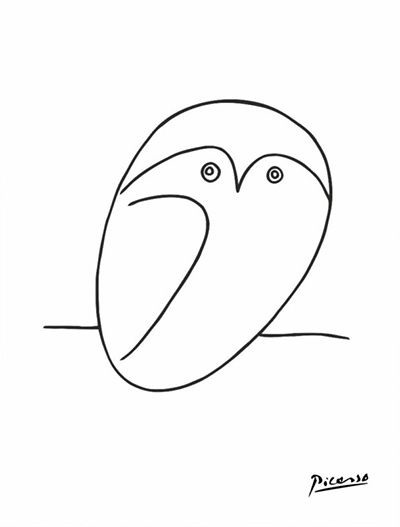
.jpg)
